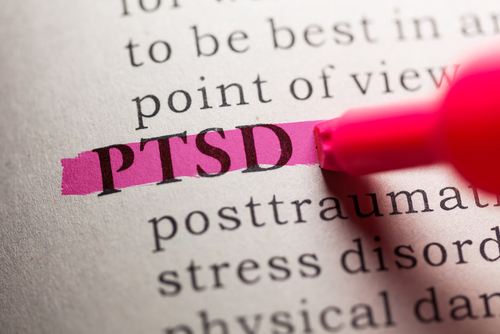Recent advances in dealing with post-traumatic stress disorder
ANI May 10, 2018
According to a recent study conducted by the Wolters Kluwer Health, recent advances in scientific understanding of how post-traumatic stress disorder (PTSD) develops and persists may lead to more effective treatment and even prevention of this debilitating disorder.

A growing body of evidence helped psychiatrists to understand the aspects of brain structure and function involved in PTSD, informing efforts to interrupt the processes leading to the development of PTSD symptoms in traumatised individuals, according to an introductory article by Guest Editor Kerry J. Ressler.
Ressler wrote, "PTSD, while one of the most recently defined syndromes in psychiatry, may also be one of the earliest to benefit from progress in neurobiology and advances in translational approaches to brain function and behaviour." Ressler noted that patients with PTSD have "characteristic reexperiencing, avoidance, and hyperarousal symptoms," which can persist for months or years after exposure to traumatic events.
Post-traumatic stress disorder affects about 6 percent of the population, but the rate is much higher in groups exposed to severe trauma, such as combat veterans, refugees, and assault victims. Although PTSD is at least partly genetic, it also depends on the personal history of trauma in childhood and adulthood, as well as psychological factors linked to the mediation of fear and regulation of emotions.
"Therefore, PTSD is among the most likely of psychiatric disorders to be understood from the perspective of environmental influences interacting with biological vulnerability," according to Ressler. The special issue provided expert updates in four key areas related to the development, diagnosis, and management of PTSD:
- Neurophysiology: Scientific understanding of human fear responses provides important insights into how PTSD develops and persists. The mechanism of ‘fear extinction’ - in which learned fear is suppressed by new learning - is highly relevant to PTSD and its treatment.
- Neuroimaging: The research had also made strides in identifying the brain structures and functions involved in emotion dysregulation of PTSD. Studies have identified biomarkers of these dysregulated processes, including the abnormal functioning of the body's stress responses and dysfunction of a brain area called the hippocampus and amygdala, which is involved in memory and emotional responses. These discoveries may have pointed toward treatments targeting stress hormones and functioning of these brain regions.
- Resilience: The concept of resilience - the ability to adapt successfully to trauma or threat - is being studied to explain why some traumatised individuals develop PTSD symptoms while others do not. Interventions to promote resilience have potential not only as a treatment for people with PTSD but for also preventing it in populations at risk of trauma.
- Evidence-based treatments: The special issue concluded with a review and update of evidence behind the range of ‘reasonably effective’ treatments for PTSD. Psychotherapy approaches addressed the underlying dysfunctions of fear extinction and emotion regulation.
While current treatments do address the underlying mechanisms of PTSD, many patients do not improve or continue having symptoms, while others might have a better response to individualised treatment approaches. "Advances in neurobiology and behavioural science are needed for truly targeted, innovative, robust treatments and preventions," Ressler concluded. The findings are published in the journal Harvard Review of Psychiatry.
-
Exclusive Write-ups & Webinars by KOLs
-
Daily Quiz by specialty
-
Paid Market Research Surveys
-
Case discussions, News & Journals' summaries
